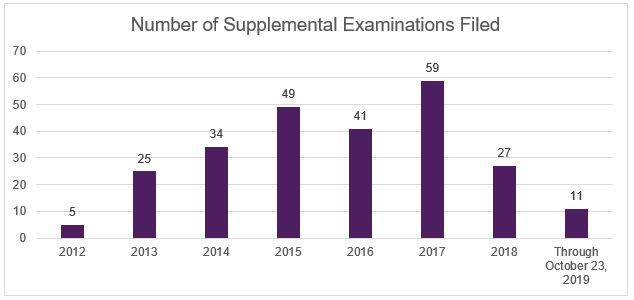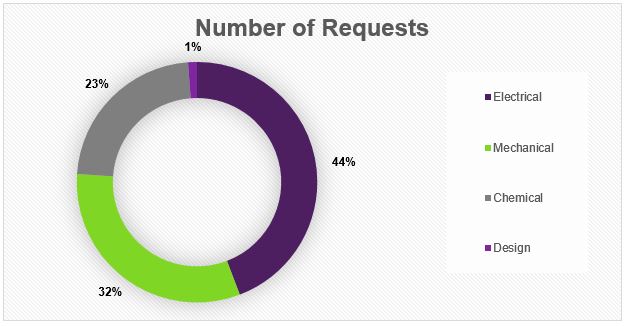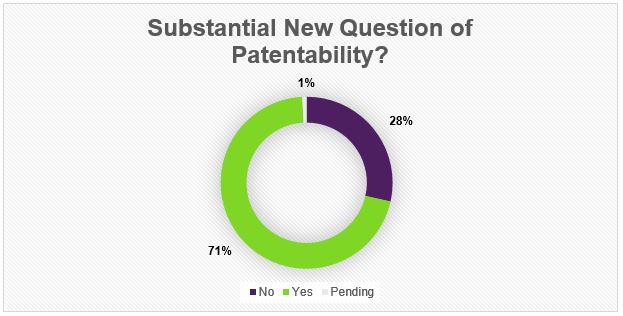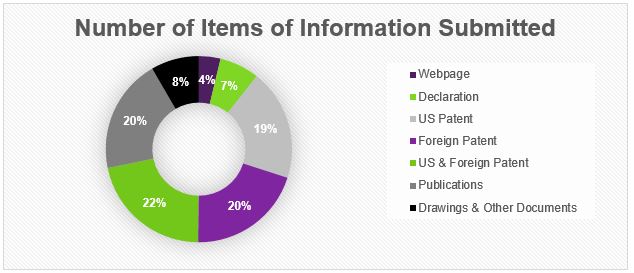
Graphical Snapshot of Supplemental Examination
Supplemental Examination was born out of fixing potential inequitable conduct issues before they are raised in a court proceeding. 35 U.S.C. § 257(a); 27 CFR § 1.601; M.P.E.P. § 2800. The stated goal is to improve patent quality and help patent owners potentially inoculate a patent from inequitable conduct. A typical request asks the USPTO to consider, reconsider, or correct information that the patent owner believes is relevant to the patent (Rule 56, Section 101, 112, etc.). The requester may submit patents, printed publications, and any additional information that may be relevant to the patentability of a claim.
Each supplemental examination request is limited to 12 items of information. Only a patent owner may request supplemental examination. It may only be requested after the patent issues. Within 3 months of requesting, the Office will issue a certificate determining if a “Substantial New Question” of patentability was raised by the submitted information. If a “substantial new question” of patentability was raised, the Office will order an ex parte reexamination.
If the Office determines that there is no “substantial new question” of patentability:
- Patent remains valid;
- Patent owner receives potential defensive benefits;
- Patentability was reconfirmed by USPTO;
- Estoppel by any future unenforceability challenges based on the submitted information.
The following graphs show:
- 251 supplemental examinations have been filed since 2012 almost equally across technology.
- A “substantial new question” of patentability was raised and an ex parte reexamination was ordered 71% of the time.
- And, finally, many different sources of information have been submitted.

Supplemental Examination is a seldom requested post-grant tool under the America Invents Act. The graph above illustrates the number of supplemental examinations filed since the AIA went into effect on September 16, 2012. In total, only 251 supplemental examinations have been filed through October 23, 2019. Since adoption of the AIA, the yearly average for the number of supplemental examinations filed is about 36. The current trend, however, shows that the number of filings has decreased over the last two years from 59 filings in 2017 to 11 as of October 23, 2019.

The USPTO breaks down all of the filed supplemental examinations into the four categories shown above. Of the supplemental examinations filed to date, a plurality have been directed towards electrical patents.

The graph above illustrates the USPTO’s decisions regarding if substantial new questions of patentability were raised by the new items of information submitted during the supplemental examinations. If a substantial new question of patentability was raised, the USPTO will order an ex parte reexamination.

Supplemental Examinations require the patent owner to submit new items of information for the USPTO to consider. The graph above breaks down the types of new items of information submitted by patent owners into seven categories. The most common type of new items of information filed with a request for supplemental examination were US and Foreign patents or prosecution histories.

Receive insights from the most respected practitioners of IP law, straight to your inbox.
Subscribe for Updates